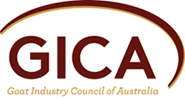The National Residue Survey (NRS) is a vital part of the Australian system for managing the risk of chemical residues and environmental contaminants in Australian food products. The NRS supports Australia’s food industry and primary producers by facilitating access to key export markets and confirming Australia’s status as a producer of clean food. In 2013-14, […]
Webinar 26 May 2015: FAMACHA and goats – a practical on-farm technique for Barber’s Pole
Do you have a barber’s pole problem in your goat herd? How can you tell and what can you do about it? Our guest presenter, Maxine Lyndal-Murphy has extensive experience in worm management through her past roles with Queensland Department of Agriculture and the Wormbuster laboratory in Brisbane and will provide a practical overview of […]
Have your say by 30 May
What changes would you like to see in the industry in five years’ time? Do you want to know what growth rates to expect from young rangeland animals? Do you want access to more information about the markets your animals are headed to so you can better select the animals you’re sending to slaughter or […]
Catch up on the latest MLA goat industry webinars
Over the past five months, MLA have hosted a series of webinars for goat industry participants covering topics such as: goatmeat market requirements, trends and prices opportunities, development and promotion of goatmeat markets genetic improvement and parasite management, and grazing pressure and dog control. Catch up on these webinars by visiting the MLA website. […]
Producers share tips about exclusion fencing
Wild dogs present an ever increasing risk to goat producers in mainland Australia with stock losses reported in most major goat producing regions. In some areas, goats can no longer be managed effectively due to pressure from wild dogs. In an effort to prevent stock losses due to wild dog predation, a number of producers […]
New plan doesn’t kid around with CAE and JD
Two slow acting, insidious and incurable diseases afflict the goat industry – Caprine Arthritis Encephalitis (CAE) and Johne’s disease (JD). But help is at hand with the National Kid Rearing Plan offering Australian goat producers some actions that can reduce animal suffering, increase production and minimise the spread of infection. CAE is more virulent, infectious […]
Webinar highlights value of export markets for goatmeat
The first in a series of free webinars for goat producers and other industry participants was held on September 26. This webinar focused on goatmeat market requirements, prices and trends. Presenters included Campbell McPhee, Owner of Western Meat Exporters in Queensland, Blair Brice, Business Development Manager of Wellard Meat Trading based in Western Australia, and Ben Thomas, […]
Preparation for dispatch of livestock
The Livestock Production Assurance (LPA) program is the Australian livestock industry’s on-farm food safety program. It meets the stringent requirements of our export markets, providing an assurance of the safety of red meat grown on Australian farms. When producers become LPA-accredited, they are promising to meet LPA’s requirements and fulfil their responsibility in the safe […]
PDS highlights importance of measuring genetics
The genesis of most practical and applicable research in agriculture comes from the producers themselves. By facing problems on a daily basis, resourceful producers often devise solutions on-farm through trial and error. Producer Demonstration Sites (PDS) can accelerate this process by supporting groups of livestock producers and extension staff in demonstrating, developing and adopting priority […]
Pest to profit
Wild goats have long been derided as a scourge to the environment and a pest to pastoralists. But that view is radically changing. In recent years, rangeland goats have been the salvation of some and the future hope of many. […]
